What is Value-Added Agriculture?
To fully understand what value-added agriculture is, it is important to first understand the concept of consumer value. Consumer value is the relationship between the benefits, or utility, consumers associate with a product and the price of that product. Even if the price of a product is high, the product may be perceived as having high value, if the consumer benefits of the product are also high. It is crucial that the producer keep in mind that it is the consumer's perceived value that is important, not the producer's. Hence, if producers wish to increase the price of their products, they must provide a product that is higher in value or has value-added over traditional commodities.
Recent research finds that in order for a product to generate additional value in the mind of the consumer, it must have at least one of the following attributes (Anderson and Hall, 2000):
- Quality: the product or service must meet or exceed customer expectations;
- Functionality: the product or service must provide the function required;
- Form: the product must be in a useful form;
- Place: the product must be available in the correct place (retail location);
- Time: the product must be available at the right time, such as seasonally;
- Ease of possession: the product must be easy for the customer to obtain.
For example, producers who wish to convey a “quality” signal to consumers may choose to brand their products. Consumers are often willing to pay more for a product with a brand name they can identify because they associate that name with quality or trust. In fact, a study by Giddens et al. (2002) finds that products with brand identification were priced as much as 40% over the price of similar non-branded products. The value derived from this perceived extra quality may not be directly reflected in the product's price, but it does appear in the consumer's willingness to pay for the product.
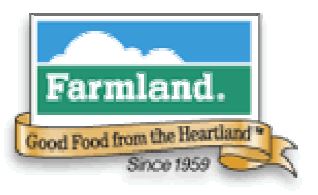
In the past, farmers and ranchers were supply-side producers, meaning they put effort into lowering their production costs in order to provide a low-cost product to consumers. Value-added strategies focus on demand-side production by placing an emphasis on evaluating the consumer base and determining their needs. Producers then find a way to provide the good or service their market desires using efficient production methods. This empowers producers by giving them more control over their production, processing, and marketing.
Applications: Value-added Products
Value-added agriculture can manifest itself through value-added products or through diversified product/service offerings, often called bundling. One way of adding value to a product is to take a raw product to the next level in the marketing chain (Anderson and Hall, 2000). Often the next level is processing, packaging, and/or marketing (distribution). However, for cattle ranchers, this might simply involve retained ownership of calves past the weaning stage, which is known to be the most expensive stage of cattle production. This type of value-added product falls under the U.S. Department of Agriculture (USDA) definition of value-added, which states that “value is added to a product when its market segment is expanded and the producer is allowed a greater share of revenue from the marketing, processing, or physical segregation of the product.”
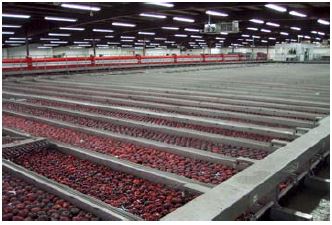
Producers often find that entering into the business of product processing or marketing can be done effectively through membership in cooperatives or marketing alliances. The cooperative, composed of many small farm/ranch operator members, processes and/or markets the products produced by its members. Alliances and cooperatives also create economies of scale by providing farmers and ranchers with access to machinery and tools they may not be able to afford on their own. Although this does not guarantee profits, it can lower production costs. Additionally, forming an alliance or cooperative may reduce transactions costs. Transactions costs are the costs of moving the product from the farm gate to the consumer and may include the time, sales charges or commissions, and transportation costs. For more information on cooperatives, please see University of Nevada Cooperative Extension's publication, “Cooperatives: A Vehicle for Cost Sharing and Expansion” (Slocum and Curtis, 2005).
A second form of value-added production includes differentiating the product from other products on the market. This has been a popular approach among producers who wish to maintain their autonomy rather than selling to mainstream markets. Differentiating one's product can be done in several ways. For both farmers and ranchers, a popular route to differentiation has been the shift to organic production. This is an example of a niche market, which gained popularity and became more main stream. In order to become USDA Certified Organic, producers must meet several guidelines including restricted use of pesticides and chemical fertilizers for crops and certified organic feed and restricted use of hormones and antibiotics for livestock. Additional information can be found on the USDA Web site, listed in the additional information section.
Differentiated Product Types
Farm Products:
- Organic
- Pesticide-free
- Natural
- Family produced
- Locally grown
Livestock Products:
- Hormone-free
- Antibiotic-free
- Free-range
- Humanely raised
- Pasture-, grass-, or grain-fed
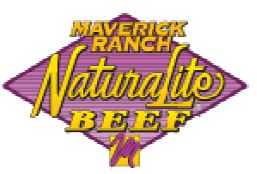
In addition to Certified Organic, the USDA has other possible certification programs. For livestock, these programs often include lean, natural, grain-fed, pasture-raised, free-range, hormone-free, and humanely-raised. For fruit, vegetable, and other crop producers, certification programs tend to be more limited, such as the raw organic or pesticide-free designations. However the use and popularity of organic, natural, and family produced products for processing into cereals, breads, and other goods is growing.
Another way of differentiating a product is through “locally grown” orientation; commonly know as destination of origin labeling. Destination of origin labeling refers to the process of placing a label on agricultural products certifying that the product was produced in a specific state, county, country, or other region. The added value from this type of labeling relates either to a quality signal, as previously discussed, or to the intrinsic value consumers place on purchasing an item that was produced in a specific region.
Finally, consumers often see value in products that have been produced through sustainable agricultural practices. This refers to agricultural methods which ensure that the best interests of the farm or ranch family, the community, and the environment are being upheld. Sustainable agriculture involves reducing the pollution of surface and ground waters from agricultural production, building soil and plant diversity, protecting land from development, rebuilding local rural communities, and passing down traditional farming and animal husbandry skills (Earles and Fanatico, 2000).
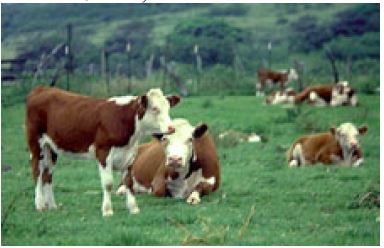
Applications: Adding Value by Diversifying
Producers can create additional value through diversified product/service offerings. Value can be added to products by bundling complementary products (Parcell et al., 2002). An example of this is an ice cream producer also selling organic milk used in the ice cream production process, as is done by ice cream producer Ben and Jerry's (benjerry.com). For wheat or other grain producers, bundling may include offering customers (livestock producers) the ability to graze prior to the primary growing season. This generates additional income from grazing fees and also increases grain yields through tillering.
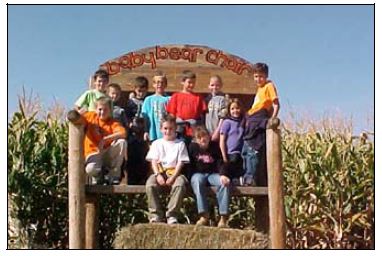
Another method of diversification includes agritourism. People who have spent their lives on farms often overlook the fact that, for city dwellers, a visit to a farm can be an exciting new experience. A survey of visitors to agricultural areas in Cochise County, Arizona, asked what the visitors liked the most about their visit. It was determined that 45% of the visitors enjoyed the farm experience most, while 44% of total visitor parties included children, indicating that giving children the opportunity to experience farm life and see how food is produced was a strong motivator behind farm visits (Anderson and Hall, 2000). The "farm experience" can be enhanced by creating recreation opportunities for visitors such as hay rides, barbeques, guided tours, and petting zoos and offering hunting and/or fishing permits on the land. Other options include selling local crafts or offering complimentary refreshments that feature farm products visitors can purchase at local farmers’ markets.
For more information on agritourism, please see University of Nevada Cooperative Extension's publication, “Agritourism: Opportunity for Farm Diversification in Nevada” (Monson and Curtis, 2005).
Where can I find additional information?
The USDA Web site contains information about certification programs for all types of producers.
ATTRA, Appropriate Technology Transfer for Rural Areas, provides links to many articles discussing methods of sustainable agriculture and sustainable agriculture's importance.
The Western Extension Marketing Committee Web site provides information and articles relating to marketing, agriculture, and agribusiness.
USDA-RD provides annual Value-Added Producer Grants (VAPG). These grants may be used for planning activities and working capital for marketing value-added agricultural products and for farm-based renewable energy. Eligible applicants are independent producers, farmer and rancher cooperatives, agricultural producer groups, and majority-controlled producer-based business ventures.
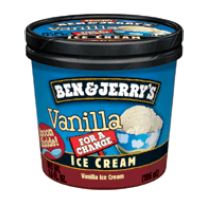
References
Anderson, D.P. and C.R. Hall. “Adding Value to Agricultural Products.” Texas Agricultural Extension Service, 2000. Online.
Ben and Jerry's Homemade Holdings, Inc. Mission Statement. Online.
Earles, R. and A. Fanatico. “Alternative Beef Marketing.” Livestock technology note by Appropriate Technology Transfer for Rural Areas (ATTRA), 2000. Online.
Giddens, N., M. Brees, and J. Parcell. "Building Your Brand." Missouri Value Added Development Center, University of Missouri, 2002. Online.
Monson, J. and K.R. Curtis. “Agritourism: Opportunity for Farm Diversification in Nevada.” University of Nevada Cooperative Extension Publication, 2005. Online.
Slocum, S.L. and K.R. Curtis. “Cooperatives: A Vehicle for Cost Sharing and Expansion.” University of Nevada Cooperative Extension Publication 2005. Online.
Parcell, J., M. Brees, and N. Giddens. "Adding Value." Missouri Value Added Development Center, University of Missouri, 2002. Online.
Cowee, M. and Curtis, K.
2005,
Value-Added Opportunities for Nevada Agriculture,
University of Nevada Cooperative Extension


